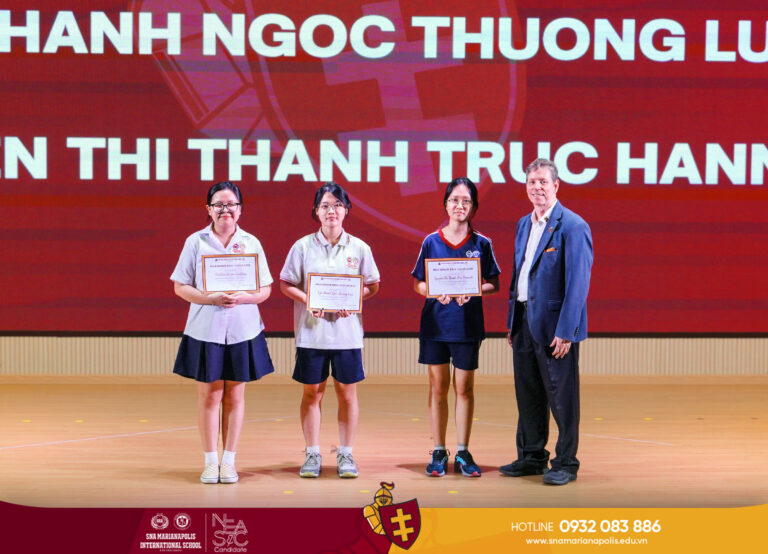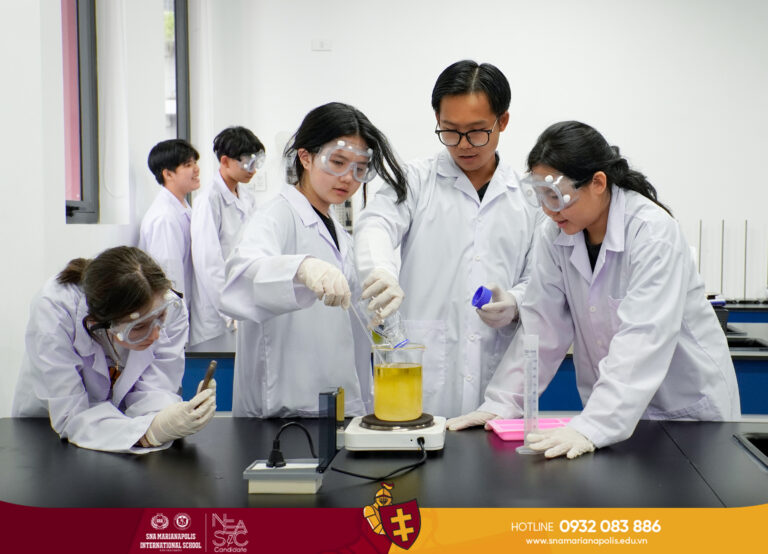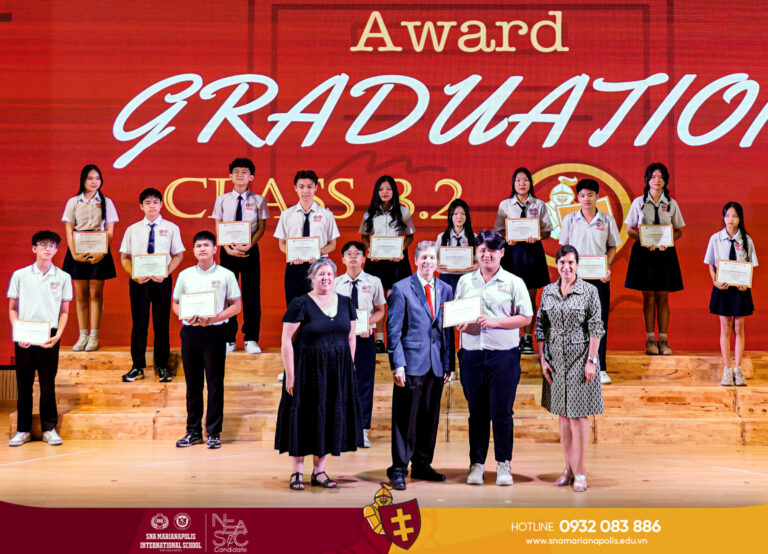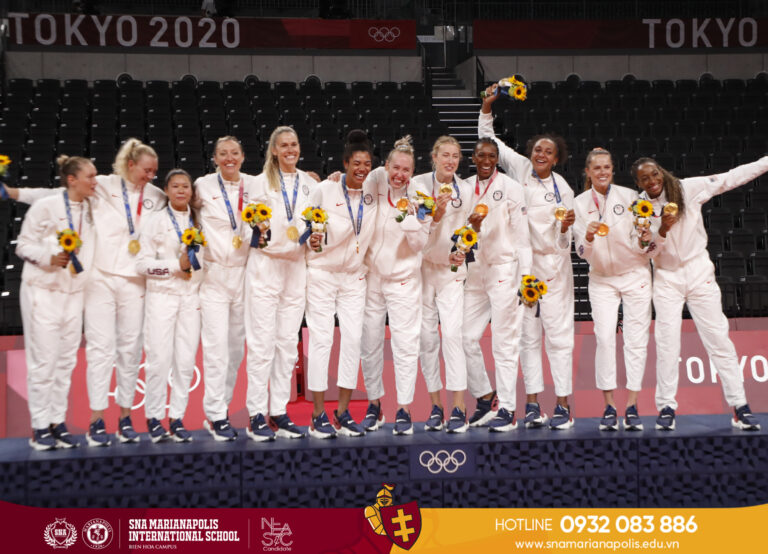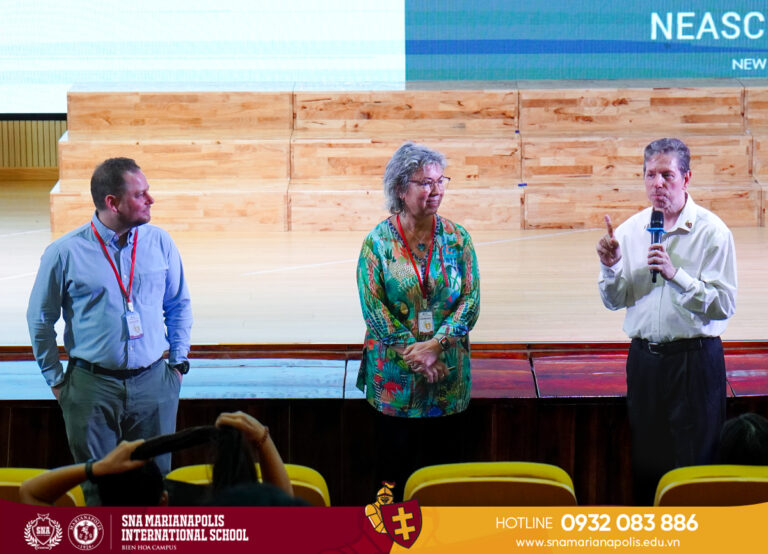“Differentiation is Probably the Most Important Thing.”
In completing their fascinating projects, the students in Ms. Joanne’s Science class not only get to choose the path that interests them but also receive tasks that are catered to their ability. This is true in her project-based and all other assignments as she is a big fan of differentiation. “I think for any body of students, it is probably the most important thing since students learn at different rates. If you only focus on middle-ability students, the advanced students will get bored and turned off while struggling students are not able to either understand or make any progress,” she explained her rationale for using differentiation.


Ms. Joanne differentiates mostly in terms of content. For instance, topical vocabulary, which she emphasizes as the utmost importance to understanding scientific concepts, is introduced to the whole class prior to the lesson. While low-ability students are only expected to understand the concepts in Vietnamese, high-achieving students are charged with extra vocabularies and expected to be able to use them. Ms. Joanne also differentiates according to the students’ readiness using scaffolding, in which she shows students the exact level of knowledge and skills they need to acquire and the essential steps to get there. Students’ evaluation process is also differentiated as to the products (paper test, digital product, PowerPoint; presentation, etc.) which are driven also by students’ interest. Ms. Joanne is flexible with the testing formats as well. Occasionally, she could easily make three versions of a Kahoot game for three student levels.
“I Use Different Strategies.”
To aid the process of differentiation, Ms. Joanne utilizes a wide array of techniques and tools. She creates a seating chart for every class that shows groups composed of a good mix of students in all ability ranges. The group members can alternate according to the assignment, whether it is a quiz or a bell work.
Sitting proudly on one of her classroom walls is the Word Wall, containing essential Science terms and concepts.

Ms. Joanne mentioned “leveled questioning” as a technique she always turns to. Her all-time favorite question to ask her high achievers is “Why?,” requiring them to explain their answers and reasoning. Meanwhile, struggling students receive more basic and specific questions such as “What?” and “When?”
Pair and group work are also commonly seen in Ms. Joanne’s class because to her, “Collaborative learning is crucial. Students must learn how to work in a group as they will end up working through teamwork in their higher education or future career.” With that saying, her class always leaves space for individual work alongside teamwork. Think-Pair-Share (where students think and do the work on their own first, then discuss with a partner, and finally share with the whole class or a large group) is a technique she often makes use of.
“How Would You Like to Change It?”
After every unit, Ms. Joanne takes the time to reflect on her teaching. “You can tell by each class what worked and what didn’t.” She always welcomes students’ feedback on the lesson, “Oftentimes, students would tell me, ‘I didn’t really like that.’” I will respond to them by asking, ‘What would you have preferred to do?’ and ‘How would you like to change it?’” For Ms. Joanne, teaching and learning is a collaborative process between the teacher and the students.
Such reflective thoughts and openness to feedback enable her to revise and update her unit plans, a process that she described as “probably not useful for that past unit but will definitely help [her] plan for the next.”

“If They Can Be Fantastic, They Should Be Fantastic.”
Even though customizing works according to students’ competency, Ms. Joanne does not restrict her students to their fixed range. She allows her low and mid-ability students the freedom to attempt doing advanced assignments, while high-ability students must complete their assigned advanced work. Setting up high goals ensures that every student constantly progresses.
After a semester of differentiation, Ms. Joanne could witness growth in her students. The low ability students are now able to coast along with the regular curriculum, with an apparent improvement in their quiz points. “Their progress may not be huge, but it is huge for them. The most important thing is to look at a student as an individual.”
At the same time, advanced or native speaker students also have to earn their work instead of getting an easy A. “If they can be fantastic, they should be fantastic,” Ms. Joanne said as she shared her aim for students of all levels to expand themselves and deserve the results they reap.

“It Doesn’t Matter If You Get It Wrong, As Long As You Learn From It.”
An improvement could also be seen in the students’ mental and emotional aspect. “At the beginning of the school year, my students were very reluctant to stand up and talk or answer a question in front of the class. Now that they know what is expected of each individual or group in every assignment, their confidence is boosted.” Apart from this, Ms. Joanne always encourages a positive mindset, telling her students, “It doesn’t matter if you get it wrong, as long as you learn from it.” She even makes use of mistakes to have classmates help each other, creating a collaborative learning environment for all. Her students are now motivated to attempt answering or talking without fear of shame while gaining peer support in class.

Differentiation, project-based tasks, together with positive reinforcements go a long way to build students’ confidence and interest while fostering the student-student and student-teacher relationship in Ms. Joanne’s classroom. All of these make her class one of the most “looked-forward to” for all middle school students at SNA Marianapolis International School.
For more information about the curriculum, please kindly contact our Admissions via Hotline at 0932 083 886 or fill out the form in the following link: https://snamarianapolis.edu.vn/register-for-consultations/



